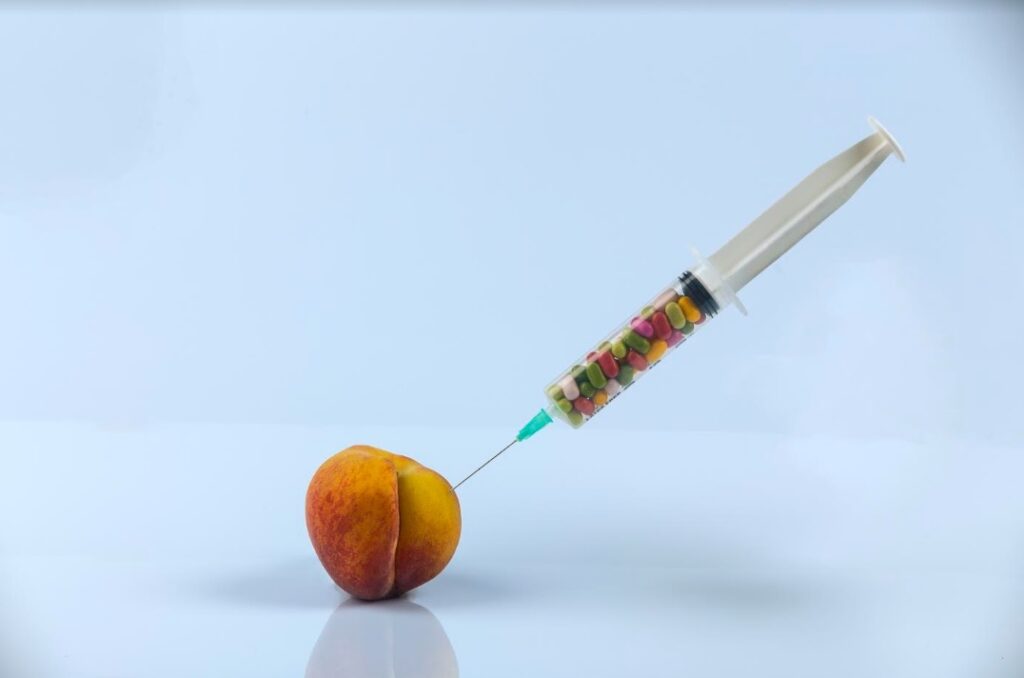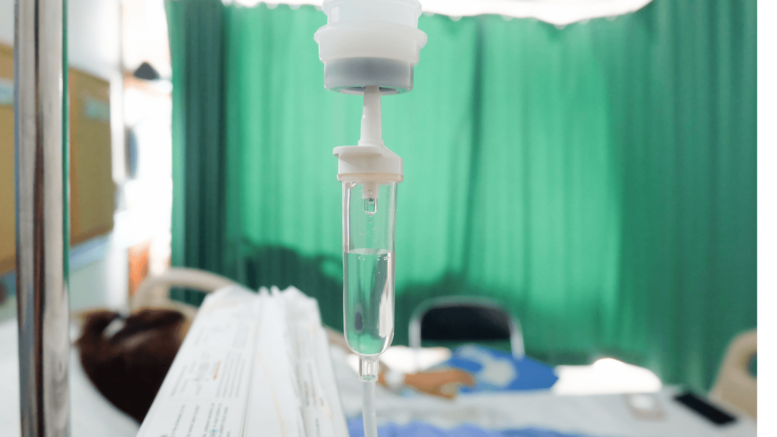If you are keen on social trends, you have probably noticed this latest craze that is common amongst overworking urbanites and party lovers where they pump IV fluids comprising of minerals, water, and vitamins directly into their bloodstream through an IV line. There is a lot of buzz about the health benefits of the procedure as a way of revitalizing and hydrating the body in a fast and easy way.
Sometimes, a doctor may prescribe intravenous rehydration when a patient shows signs of moderate to severe dehydration. This treatment method is more common amongst children than adults as they are more prone to dehydration, especially when ill. Sometimes syringe pumps can be beneficial.
Understanding Dehydration
In November 2020, studies showed that at least 75% of Americans were chronically dehydrated. This dehydration is characterized by dark yellow urine, thirds, muscle cramps, and even headaches. In fact, these are considered early signs of dehydration and call for immediate replenishment of body fluids. This can be done by drinking enough water to prevent severe dehydration symptoms.
Dehydration occurs when the body loses more fluid than a person is taking in, leaving the boy with limited water resources to carry out normal body functions. When lost fluids are not replaced, it eventually leads to dehydration.

Anyone can become dehydrated, with children and older adults running a higher risk. Common causes of dehydration amongst children include vomiting and Diarrhea. Naturally, older adults have lower body water levels or may be using medication that increases the risk of dehydration. Dehydration can occur in any age group if an individual fails to drink enough water, especially in hot weather or you exercise vigorously. Mild or moderate dehydration can often be reversed by drinking more fluid, while severe dehydration may require a doctor’s intervention.
Symptoms of dehydration
Sometimes, thirst is not the most ideal indication that the body needs rehydration. Many people, especially the elderly, do not feel thirsty until they are severely dehydrated. This is why it is often recommended to increase water intake, especially in hot climates and when ill.
Signs of dehydration can vary depending on age.
Signs of dehydration in infants and young children include:
- No wet diapers for three hours
- Dry mouth and tongue
- Restlessness or irritability
- No tears when crying
- Sunken soft spot on top of the skull
- Sunken eyes, cheeks
Signs of dehydration in adults include:
- Extreme thirst
- Less frequent urination
- Dark-colored urine
- Fatigue
- Dizziness
- Confusion
It is essential to contact a medical doctor if:
- A loved one has had Diarrhea for more than 24 hours
- If a person looks disoriented, less active, and sleepier than normal
- You notice signs of black or bloody stool
- One is having a hard time keeping down fluids
Causes of dehydration
Different reasons can cause dehydration. Sometimes, it can occur from simply failing to drink enough fluids because of a busy lifestyle, sickness, or lack of access to clean drinking water. Other common causes include:
Vomiting and Diarrhea
Suffering from acute or severe Diarrhea (Diarrhea that comes violently and suddenly) leads to a fast loss of water and electrolytes in the body over a short period. This is also the case if you experience vomiting along with Diarrhea or prolonged vomiting.
Excessive sweating
You love water every time you sweat. Doing vigorous activity during the day and failing to replace the lost fluids can eventually lead to dehydration. This is especially common during hot or humid weather since the environment increases the amount of sweat produced and fluids lost.
Fever
Generally, the higher the fever, the more dehydrated a person becomes. It can get worse if the person has a fever on top of vomiting and Diarrhea.
Increased urination
If you suddenly start urinating more often than you used to, it may be a sign of undiagnosed diabetes or a reaction to a medication, which increases the risk of dehydration.
Complications from dehydration
Some of the complications that can occur from dehydration include:
- Heat injury – includes mild to severe heat cramps, heat exhaustion, or even heatstroke. Common among people who exercise vigorously, sweat heavily, and do not replenish body fluids.
- Kidney and urinary complications – prolonged sessions of dehydration can lead to UTI (urinary tract infection), kidney failure, and even kidney stones.
- Hypovolemic shock – this is a low blood volume shock that is a life-threatening complication of dehydration. Low blood volume causes low blood pressure and subsequently a drop in the amount of oxygen in the body.
- Seizures – losing important electrolytes can cause an imbalance in the transmissions of electrical signals through the brain leading to involuntary muscle contractions and sometimes unconsciousness.
Intravenous or iv rehydration treatment is one of the many forms of intervention used to prevent or reverse dehydration.
How intravenous rehydration works
Intravenous rehydration is simply the injection of rehydration fluids through the veins directly into the bloodstream. Different fluids can be used for different hydration needs, usually consisting of water and electrolytes.
When administering IV fluids for hydration, the doctor or nurse inserts an IV line into a vein through the arm. This IV line consists of a tube and needle on one end, with the other connecting to the IV fluid bag.
The type of fluid used is usually at the doctor’s discretion, depending on the patient’s needs. Some factors that help to determine the type of IV fluid used include medical conditions, age, and the level of dehydration. The length of treatment and the amount of fluid needed depends on the severity of the dehydration.

When to consider getting IV rehydration therapy?
IV therapy is the fastest and most efficient way to replace lost body fluids. However, not everyone who is dehydrated needs IV hydration therapy.
Fluid IV for dehydration is typically recommended for treating advanced dehydration for people needing immediate fluid replacement, like heat stroke patients. This is done since the IV catheter delivers the much-needed fluids directly to the bloodstream, whereas orally drinking water would take at least an hour before the fluids get into the bloodstream.
Therefore, it is highly recommended to only consider IV hydration therapy for extreme dehydration cases. Also using IV powder is a great way to boost your body’s hydration.
Risks of getting IV fluids for dehydration
While IV rehydration is a common, simple, and effective way of getting fluids into the bloodstream, sometimes complications can occur during the course of treatment.
Some of the potential complications include:
Air embolism
An air embolism or gas embolism can occur if the IV line pushes too much air into the vein. While rare, this risk factor can have severe consequences for the patient, including potential death.
Collapsed vein
Using IV hydration packs over a prolonged period can cause your veins to collapse. This forces you to find another vein for use. The good news is that many other veins can be used to get the IV line in.
Hematoma
This condition can occur when the blood leaks from the vein into nearby tissues. It leaves an area looking bruised and will clear within a few weeks.
Infiltration
Sometimes, the needle can move or get dislodged, causing the fluid to enter surrounding tissues. This can cause a bruising and stinging sensation, though it is easy to resolve.
Fluid overload
When too much fluid is allowed into the bloodstream too quickly, it can cause high blood pressure, headache, and even trouble breathing. Though dangerous, this issue can quickly resolve once the fluid level is adjusted.
Phlebitis
This can occur when a vein swells because of the IV. It is a common complication that is easily treated by removing the IV, elevating the arm, and placing a warm compress over the area with the IV line.
Infection
If the IV line insertion area is not well-prepped and sterilized, it increases the possibility of infection. This may cause you to be put on antibiotics to eliminate the infection.

Alternatives to intravenous rehydration: How to prevent dehydration
If getting IV hydration sounds like too much work and risk, there are other effective alternatives you can consider.
Dermoclysis
This is the infusion of sterile saline fluids into adipose tissues. It uses a 25-gauge needle and is limited to 1ml/minute per infusion site. The main benefit of this hydration method over IV hydration is that it is easier to source and can be administered by non-medical personnel. This makes it the perfect hydration option for home care, especially for patients who cannot access a hospital in good time.
Proctoclysis
Also commonly referred to as the Murphy drip, this hydration option works best for difficult conditions or when a medical saline solution is unavailable. The best solution for this type of hydration is 0.9% normal saline that can be created at home using sea salt and drinking water in 1:3 ratios.
Oral rehydration solution
This is a WHO, and UNICEF recommended hydration solution for mild to moderate dehydration where you prefer to avoid going to the emergency room or the painful IV hydration treatment. Oral hydration solutions are created with a blend of electrolytes such as magnesium, sodium, and potassium that help to relieve dehydration quickly.
IV rehydration FAQs
Can people with severe malnutrition get IV rehydration therapy?
People with severe acute malnutrition and signs of shock or severe dehydration who cannot be rehydrated orally or by nasogastric tube should be treated with intravenous fluids.
Can pregnant women get intravenous rehydration?
Yes, pregnant women can get IV hydration. It is an excellent way of giving the body the nutrients and vitamins needed to carry a healthy pregnancy. However, it is recommended that it is done under close doctor supervision.
What IV fluids are given for dehydration?
Different kinds of IV fluids can be given for rehydration, with the doctor deciding which option is best for you. Some options include:
Crystalloid solutions – these are the most common types of IV fluid administered. They contain tiny dissolved molecules that quickly pass from the bloodstream into body tissues and cells. Normal saline and D5W are common examples.
Colloids – these are solutions with large molecules that easily pass through cell membranes or remain in the blood vessels. Hetastarch and albumin are common options.
When should I report something to my provider during IV rehydration?
Alert your provider if the IV fluids are flowing too slowly or too quickly. You can also report a loose IV needle, any feelings of discomfort where the needle is placed, headache, or trouble breathing.
Do I need recovery time after IV hydration?
Most people do not need recovery time or any restrictions after IV hydration therapy.
where to get iv fluids for dehydration
fluids for dehydration IV lines can be given at urgent care centers, hospitals, and drip bars. It is highly recommended to consider getting your IV rehydration treatment at a registered medical facility, as this comes with the guarantee that professional nurses and doctors will attend to you.
The bottom line
IV fluids treatment offers many benefits for severely dehydrated individuals. If you are experiencing mild dehydration, it is always advisable to consider other less invasive options like drinking more fluids or using ORS options. IV hydration is only ideal when recommended by a doctor as a quick way of getting you back on your feet.
